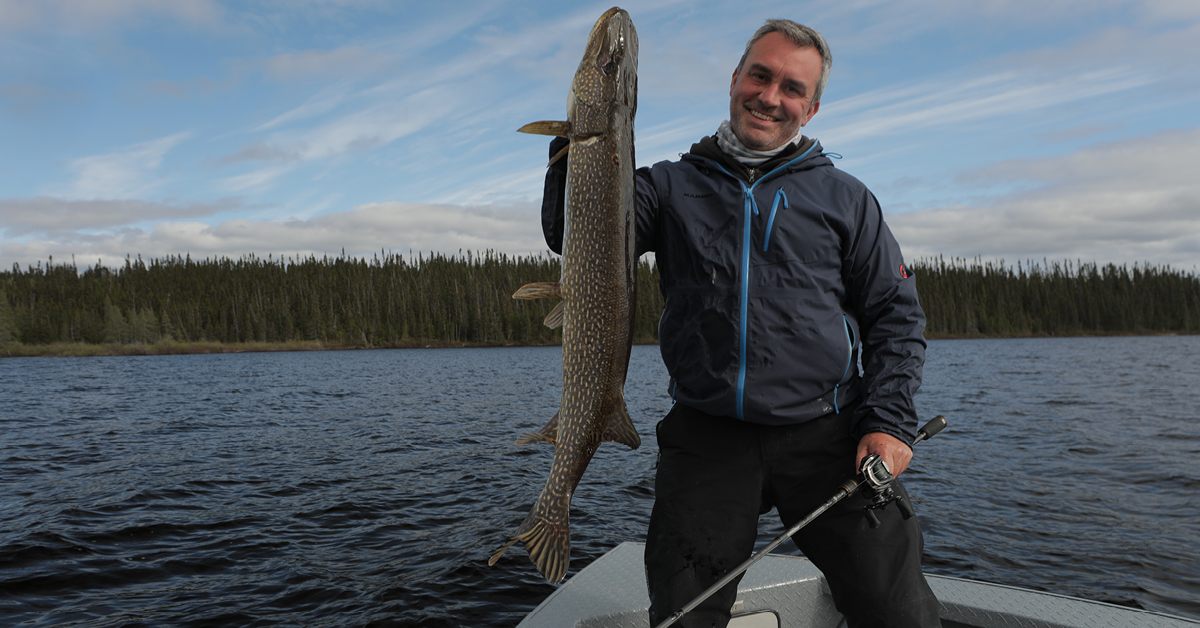CRAPPIE FISHING TECHNIQUES AND TIPS
Fishing | March 27, 2024
SAIL
May 21, 2021

It’s probably one of the most-asked questions my team and I get: “Cyril, which rod and reel kit do you recommend for such and such a fish?” As I’ve explained in the past, it’s impossible to answer this question correctly. And the reason is simple: A fishing rod should not be selected based on the type of fish you’ll be fishing, but rather on the fishing technique that you’ll be using.
Article written by Cyril Chauquet, host of the Fishing Adventurer television show and professional fisherman.
In this article, discover my advice on the subject:
When selecting a fishing rod, there are two factors to consider: its length and how far it can cast. For very experienced anglers, action should also be taken into consideration, but that touches upon very specific techniques that we won’t be getting into in this article.
The length of the rod has an impact on the distance at which you will cast your line. The longer it is, the further out you’ll be able to cast. However, a rod that’s too long can be cumbersome and difficult for moving your lures around – especially if you’ll be fishing from a boat or kayak. That’s why I usually use a 6 ft (183 cm) to 7 ft (213 cm) fishing rod while on a watercraft. On the other hand, you can choose rods between 7 to 8 ft (213 to 244 sm), and even longer ones if you need to cast quite a ways out (if you’re fishing off the seashore, for instance).
The power of a fishing rod is undoubtedly the most important factor. It is generally expressed in ounces and determines the optimal range of lures that the rod can cast. For example, a ¼ oz – ¾ oz rod will be able to cast lures from 7 to 21 grams. If you use lighter lures, the rod won’t be flexible enough to propel them properly. If you use heavier lures, your rod may break. In general, the more power a fishing rod has, meaning it can handle heavier lures, the more solid it is and meant for larger fish. Once again, it’s the technique (and weight of your lure) that is used to determine which rod to select, and not the type of species you plan on fishing.
The combination I use the most is made up of a medium light, 6.6 ft (201 cm) rod and a 2000 or 2500 reel filled with a 15 pound (6.8 kg) braid. It’s a lightweight set that is perfect for propelling small lures (typically 5 to 20 grams). It’s actually the kit I use to fish for bass with tubes or surface lures. I also use it to fish for walleye using vertical jigging in rivers, and even for fishing trout with spoons or small swimbaits in a river. I have also caught small pike with this set while I’ve been out fishing for bass!
For certain fish, such as pike or muskellunge, don’t hesitate to fish with large lures anywhere between 20 and 25 cm long, or even longer for muskie. But larger baits mean heavier weight at the end of your rod. Therefore, you need a fishing combo that’s built for comfortable casting all day long. If your rod is too light, not only might it break, but you won’t enjoy your casting experience as much and you’ll find that your casts won’t be as precise.
This is where a baitcasting rod (also called a casting rod) and reel combo come into play. The ergonomics of this type of combo, with the reel on the top, allow you to cast heavy lures all day without getting too tired. I generally use a 7 ft (213 cm) rod with a medium heavy or heavy power, which allows me to pick among a large selection of soft baits, hard baits, spoons, and spinnerbaits. I use a braid of at least 40 pounds (18.1 kg) for the reel, or even more if I know that there are some serious groups of fish in that zone or a spot that’s particularly tricky and that the line might rub against different objects during the catching process. Aside from the pike I usually try to track down using this combo, I sometimes also use it for largemouth bass when I’m fishing near vegetation and need a powerful rod to get them out of their hiding places quickly.
The last selection I’d like to mention is one I don’t normally use in the southern parts of Quebec, but is a definite must in the northern parts! It’s a spinning combo – meaning a spinning rod (so the reel is under the rod) with medium heavy power.
In certain lakes, I sometimes have to go looking for lake trout or even walleye very deep into the water with soft lures. We’re talking about 50 feet, 60 feet, 80 feet, and sometimes even 100 feet deep. In order to reach the bottom successfully with my soft lure, I have to use particularly heavy jig heads, sometimes over 2 ounces, and my go-anywhere combo wouldn’t be powerful enough for that. So, I opt for a 7 ft (213 cm) rod (or longer if I’m fishing from the shore), and a size 4000 reel that I fill with a 30 or 40 pound braid (13.6 or 18.1 kg). Regarding the reel, it’s important to choose one with a large capacity in order to have enough line and make sure you can cast far and/or deep. I also opt for a salt-resistant model, because it’s the same combo I use for striped bass with me when I head down south on vacation!
Enjoy the adventure!